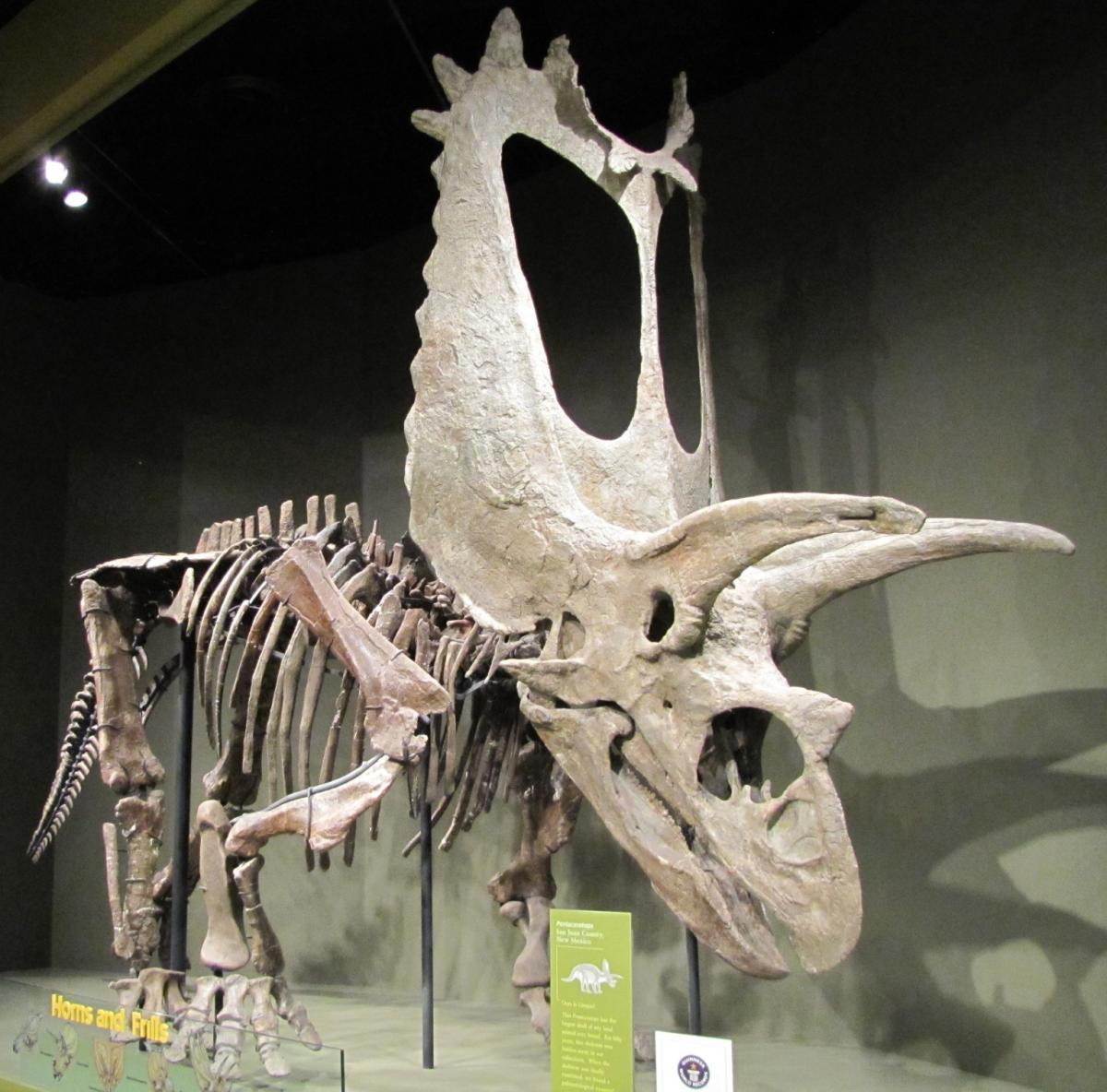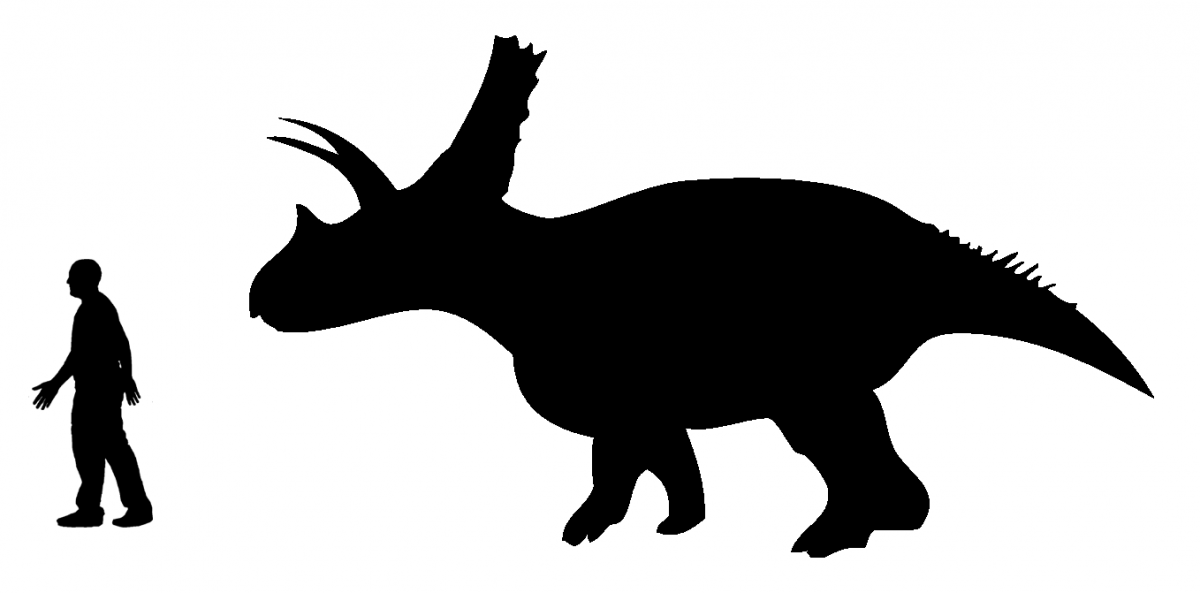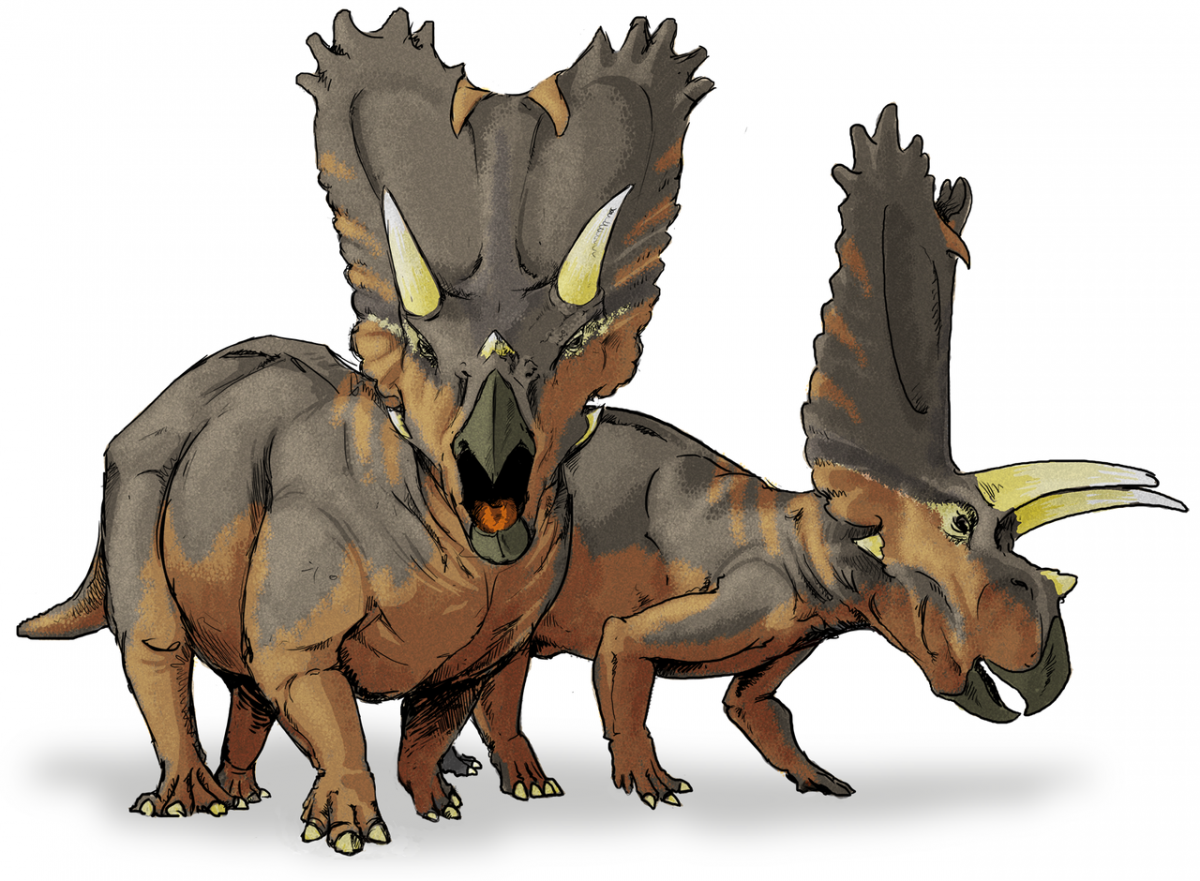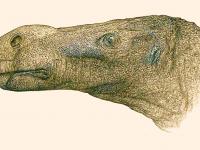Titanoceratops
Titanoceratops (meaning "titanic horn face") is a genus of herbivorous ceratopsian dinosaur. It was a giant chasmosaurine ceratopsian that lived during the Late Cretaceous period (late Campanian, 74.7–73.5 Ma, although it could have lived as late as 72.82 Ma) in what is now New Mexico, and the earliest known member of Triceratopsini. It was named in 2011 by Nicholas R. Longrich for a specimen previously thought to belong to Pentaceratops. Titanoceratops was named for its giant skull, and the type species was named T. ouranos, after the father of the Greek titans.
It is known solely from the holotype OMNH 10165, a partial skeleton including a mostly complete skull and jaws. The skeleton has a reconstructed skull measuring 2.65 metres (8.7 ft) long, which makes it an easy candidate for the longest skull of any land vertebrate. With an estimated weight of 6.55 tonnes (6.45 long tons) and length of 6.8 metres (22.3 ft), Titanoceratops can compare to the giant sizes of Torosaurus and Triceratops.
The holotype of Titanoceratops is thought to come from the upper Fruitland Formation or the lower Kirtland Formation based on field notes and the lithology of the matrix surrounding the fossils, but unfortunately the precise location of the quarry is no longer known. Because the location of the quarry is no longer known, the bold border between the formations can not be discriminated. The species was formally named by Nicholas R. Longrich in 2011 and the type species is Titanoceratops ouranos. Previously, its fossils were assigned to Pentaceratops, although its separation is not certain and the two binomials are treated as synonymous according to Wick & Lehman (2013). The holotype specimen consists of most of the fore and hindlimbs, some vertebrae, a fairly complete skull with only one small section of the frill, and partial lower jaws.
The skull measures 1.2 m (3.9 ft) from the tip of the snout to the quadrate and its restored frill extends its total length up to 2.65 m (8.7 ft) making it a candidate for the longest skull of any terrestrial vertebrate. Titanoceratops was as large as the later triceratopsins with an estimated weight of 6.55 tonnes (7.22 short tons) and a mounted skeleton measuring 6.8 metres (22.3 ft) long and 2.5 metres (8.2 ft) tall at the back. Tom Holtz (2012) noted that it is extremely similar to its closely related contemporaries Eotriceratops and Ojoceratops, which may all be synonymous. The holotype skeleton of Titanoceratops consists of a partial skull with jaws, syncervical, cervical, dorsal, and sacral vertebrae, caudal certebrae, ribs, humeri, a right radius, femora, tibiae, a right fibula, both ilia, both ischia, and ossified tendons. In total, the amount of material assigned to Titanoceratops means it is quite well known, along with genera like Triceratops, Vagaceratops, Pentaceratops, Chasmosaurus, Centrosaurus, Styracosaurus, and Anchiceratops.
Originally assigned to Pentaceratops, Titanoceratops was found by Longrich in its description to not be closely related to it, and instead found it to share characteristics with triceratopsins. The skeleton has many derived features that are shared between Triceratops and its closest relatives. However, even thought most recent studies find Titanoceratops to be valid and distinguished from Pentaceratops, one study in which Bravoceratops was described found the two genera and species to be synonymous, and therefore Titanoceratops ouranos the invalid name.
Previously, the origins of Triceratops were poorly known. Until the description of Titanoceratops, Eotriceratops was the oldest known triceratopsin, and only dated to 68 million years old, from the uppermost region of the Horseshoe Canyon Formation. No Campanian triceratopsins were known before, so it appeared as if the group suddenly diversified in the Maastrichtian. Titanoceratops shows that large-bodied ceratopsians evolved earlier than thought. Based on the age of Titanoceratops, there must have been a five million year ghost lineage leading to Eotriceratops.
Source: Wikipedia.com, NatGeo.com











